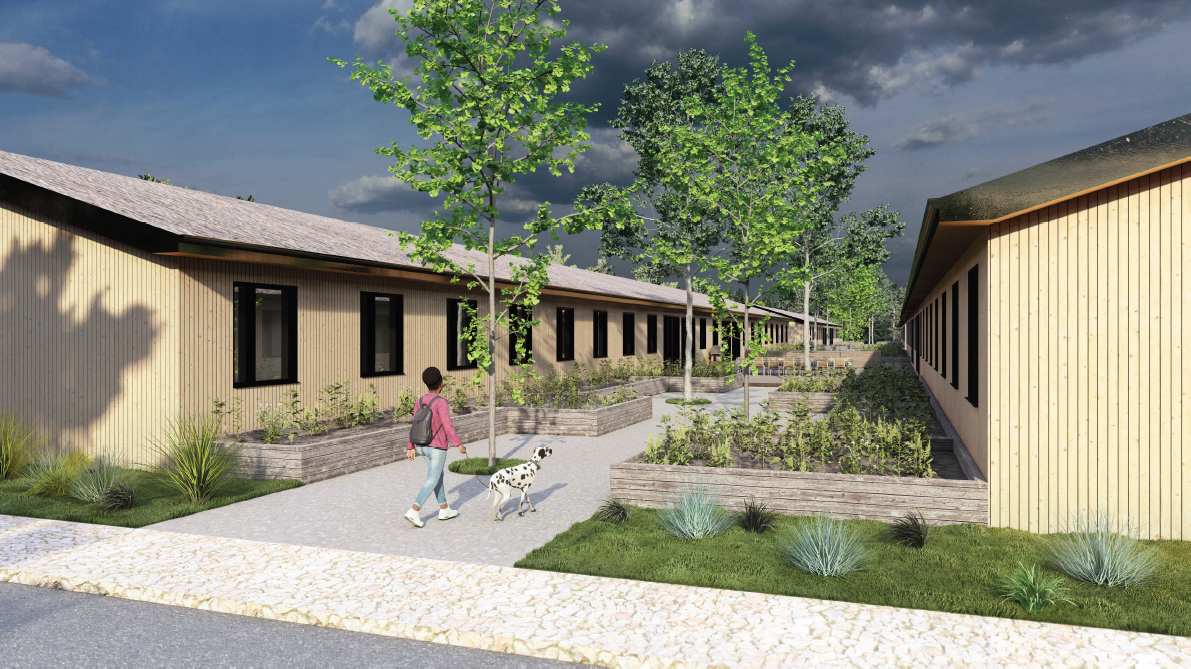People
“You don't hear sirens?“ shouted the fleeing Ukrainians
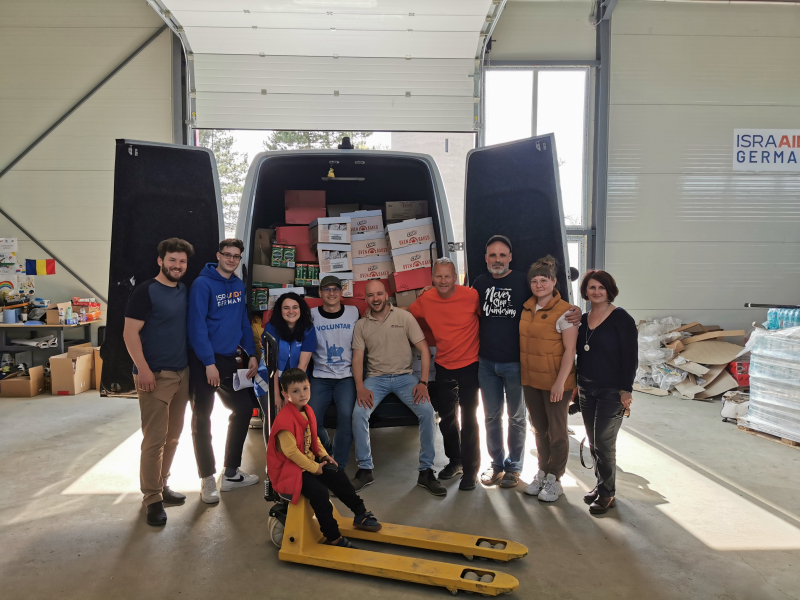
Gabriel Andrei Grosu has moved around all his life. From his native Romania, through Greece, Israel and to England, where he graduated with a Bachelor of Architecture. He liked Erasmus in Brno and decided to complete his master's study at the Faculty of Architecture of the BUT (Brno University of Technology). At the beginning of March, however, he found himself in Romania again, as his hometown became a refuge for people fleeing the war. He put his diploma, his job and his life in the Czech Republic on the back burner and went to help on the Ukrainian border. He and his friends gradually moved from distributing fruit to building a huge warehouse, arranged for the delivery of clothes, food and medicine to Ukraine, and now BUT is about to finish his thesis on the design of a refugee camp.
The interview had to be done online because you are still in Romania. When did you go there?
A little while after the war started. My hometown Radauti is twenty kilometres from the border with Ukraine, it is the main crossing point between the two countries. Although I have been away for the last few years, my friends and I are part of the Radautical Civic group and I have seen them going to the border with food and clothes because it is freezing and the people fleeing have nothing to wear. They were all volunteers who had their own careers and families, so you could see that after a week they were no longer able to help and needed to be replaced. I was doing my thesis, and I was working. It took me a week to agree with my supervisor from the Faculty of Architecture, Radek Toman, that I would go away for a week or two and see what the situation was. On the 6th of March I left by bus to Vienna and flew to Romania.
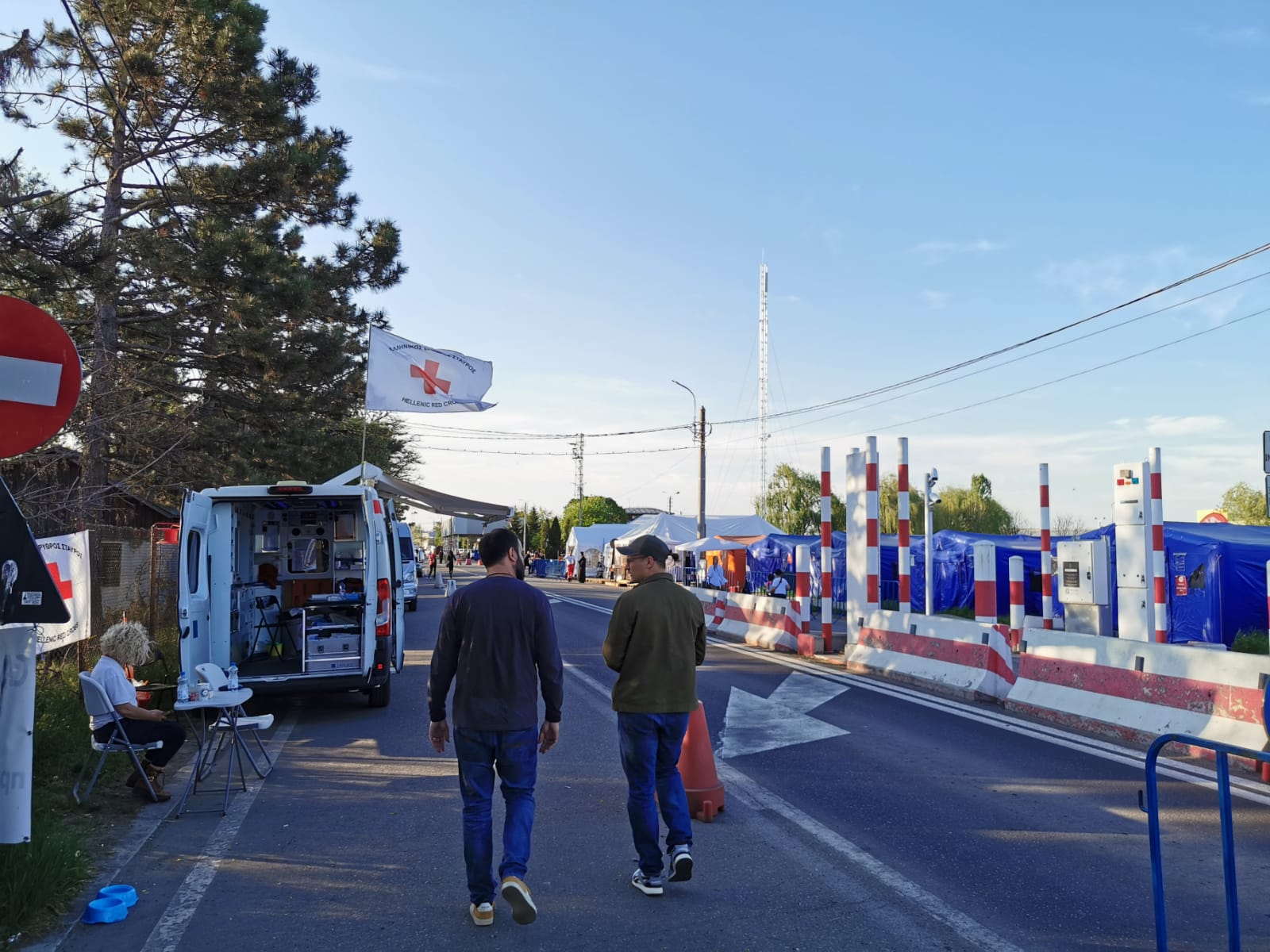
At the time, the war seemed like a huge mess. Did it look like that at the site?
I went from the airport directly to the border, where we set up two tents in cooperation with the Romanian Red Cross. We had food, clothes, but also shampoos or baby food. We were the first place people fleeing Ukraine encountered after crossing the border. There were so many people coming, most of them walked. It was about minus seventeen degrees at night. We had heating, but even that wasn't enough. We offered fruit, but it was frozen. There were kids coming in who didn't even have socks on their feet. The first month was crazy, I worked almost 200 hours as a volunteer at the border.

We also made a list of about 250 houses where people were willing to house refugees for free. At other times, we found hard-to-find medicines for people, for example for diabetes. We called local hospitals and bought from them what was freely available. In Radauti, which has about 20,000 inhabitants, everything was already redeemed at that time. The Ukrainian town of Chernivtsi, just across the border, doubled its population in that time. There were 300 000 refugees at one time waiting to see if they could go to Romania.
Has the help changed over time? After all, after the first few weeks it was probably clearer what was really needed.
After the first month, the flow of people settled down a bit, but there were still organizations and companies that wanted to help but didn't have the contacts and people on the site. Because we were local and they knew us, we decided to rent a large warehouse – it was a thousand square meters – where we would receive donations and then send them to Ukraine. Help came from Germany, England, France, Ireland, ... I first started to organize the receipt of donations and their storage. Sometimes vans full of bags of unsorted clothes arrived, and then older pupils from local schools came to help us. Other times we got pallets full of rice, oil or water. We then had to get someone to come with equipment to help us unload the cargo.
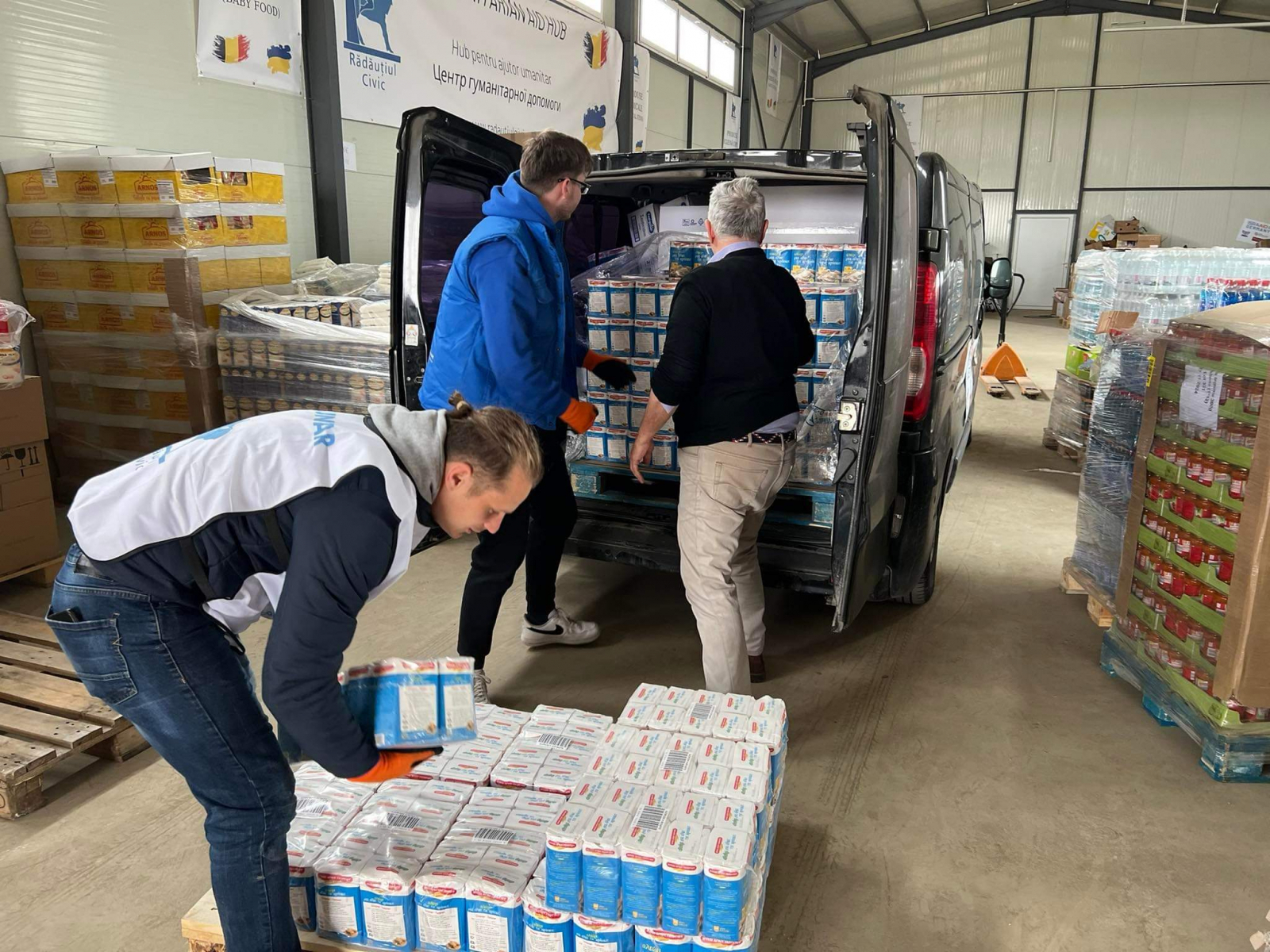
However, a large number of people have decided to stay in Ukraine, albeit near the border, and wait to see how the situation develops. So how did you get aid to Ukraine?
We sent vans across the border, where they met other cars, and the cargo was reloaded. Drivers couldn't drive very far because if something happened, the insurance company wouldn't pay them anything. So we had to find and coordinate a driver in Ukraine. The cargo would arrive at 3 a.m. and the paperwork had to be done, because it is not as easy at the Romanian-Ukrainian border as it is in the European Union. The queue at the border was 25 kilometres long, all trucks, the whole town was blocked. Thanks to our contacts and the fact that we were already working there, we agreed with the border guards that they would send a police escort every time and we would be able to pass through with priority.
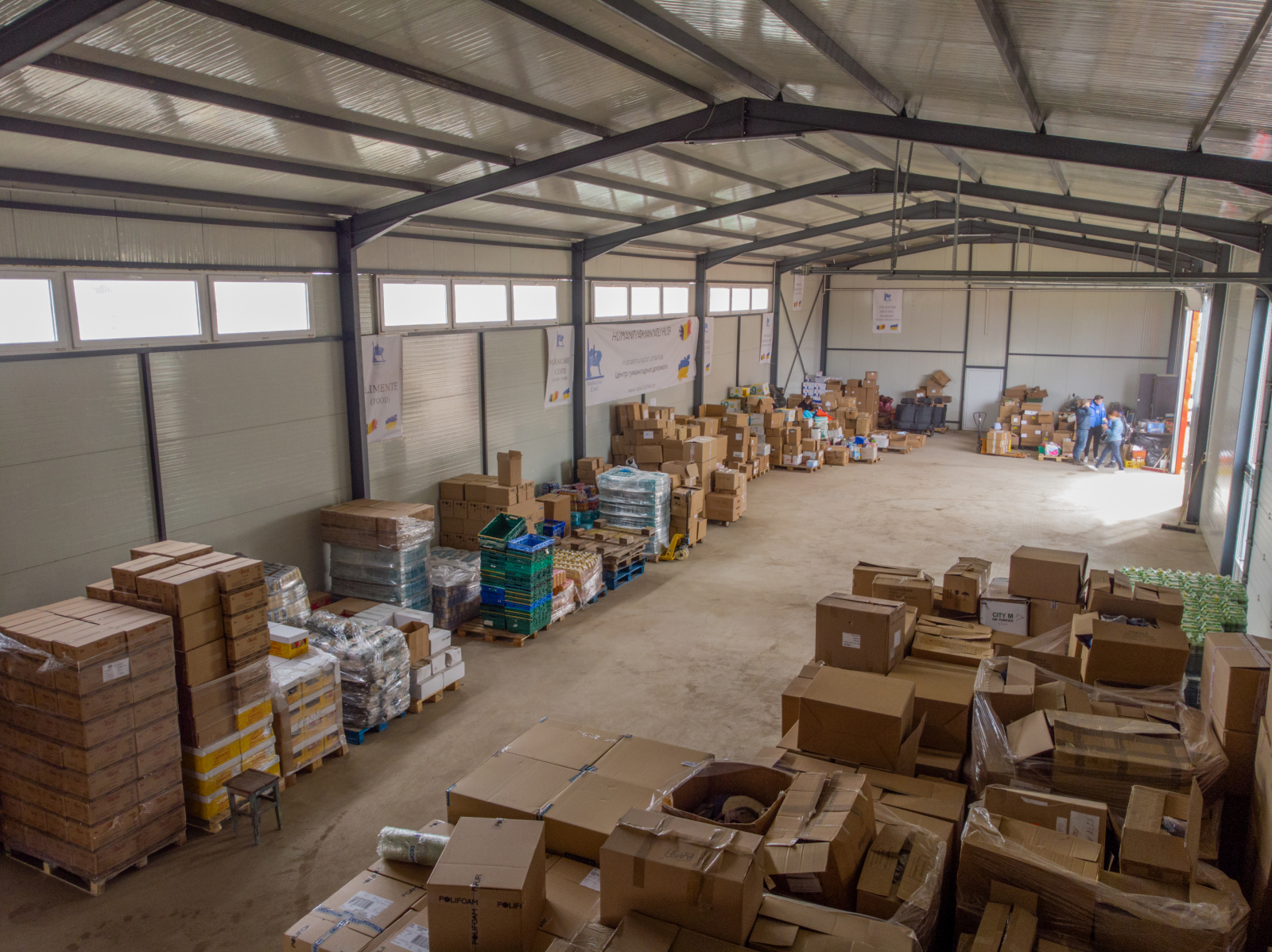
Do you still bring people food or toiletries?
The war is not likely to end for some time, and in those few months the aid has changed. At the moment we are also distributing materials such as bricks, flooring, steel beams or concrete. These are no longer basic needs, but we are looking further into the future when repairs begin. And that will take years.
Have you personally been to Ukraine?
I've been to Chernivtsi a couple of times. I once brought medicine to the local children's hospital. A refugee asked me if I could pick up his package at the post office. I was standing in line, and suddenly everyone started to panic and run away, no one told me in English what was going on. They started pushing me out of the building and asking me if I could hear sirens? We had to hide in a bunker, there were about fifty of us, there were policemen there, but otherwise hardly any men.

I've seen kids in the shelter looking for something to play with. That was the saddest part. There were only pallets to sit on, cobwebs and cold. I had these heating pads in my backpack that I handed out to the kids. They looked at it as some kind of magic. One of the women was crying because she had fled Kharkiv with her three daughters and had nowhere to go. I never went back after that experience.
If you only read about it in the newspapers, you can't imagine it at all.
I've seen a rocket attack in Israel. The rocket fell into the next street, I saw it from the balcony. But in Israel, every new apartment has one room that acts as a shelter. It was much worse for me in Chernivtsi.
You've been in Romania for a few months now and you said that this has been reflected in your thesis.
I mapped the abandoned buildings and compounds in Radauti and decided to make a proposal for a refugee camp for about 1,000 people. In the end, a plan for such a small town with three chapels, a library and parking spaces was created. It's eleven buildings. I walked around the city and the surrounding area to see what kind of accommodation we offer to refugees. Everything was very temporary, folding deck chairs close together, no conditions for a long stay. I thought that the refugees could stay here for a longer period of time and then, when the situation was better, they would return home. My proposal includes not only accommodation for mothers with children and for the elderly, but also a park or a school. It also includes a humanitarian aid centre. There are workshops where people could learn new skills. I'm also counting on a bed where they can grow vegetables. Maybe that would take their minds off the war for a while.
Is it realistic that the centre will be built according to your proposal?
Unfortunately, we don't have enough money from non-profit organizations and foundations. So far, people are focusing mainly on what is needed now, not on what will happen in five months. But we have to take into account that people will return to Ukraine. Now they are running away, they don't want to stay so close to the border. When the Russians have reached them, they fear that they will not stop even at the Romanian border.
Roman Bolcek from FA BUT presents a BIOM vision of future cities in a book. Nothing terrible awaits us, he thinks
The Czech Republic of the future. Young architects presented more than a hundred unconventional ideas
The interior of the church should be the opposite of the outside world, architect Marek Štěpán says
We hit mark with the dot, says the founder of the fashion brand VUCH
Thanks to the house for Slovakia, people received quick architectonic help after the tornado
